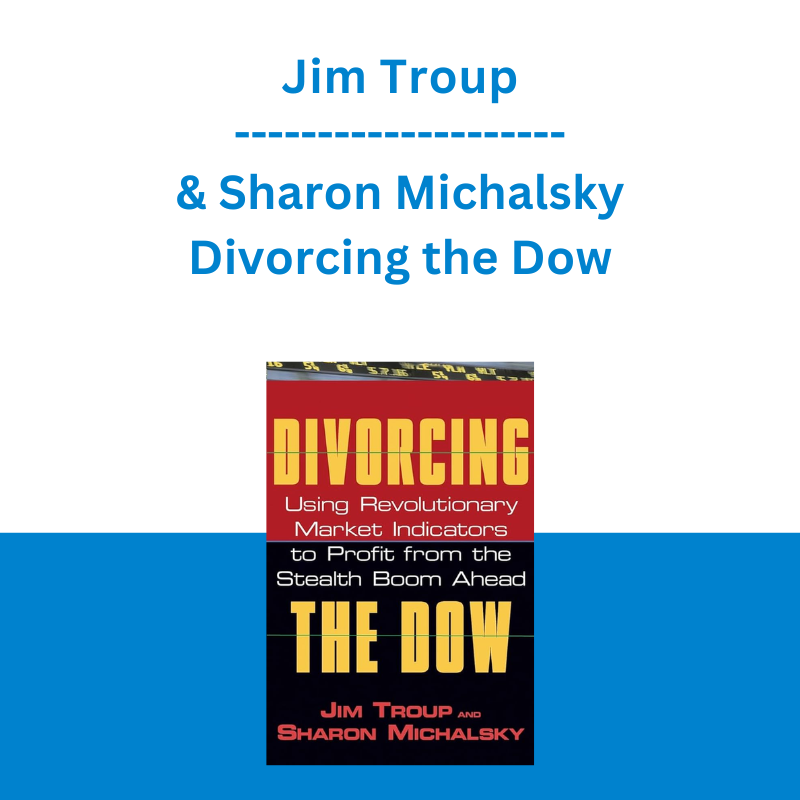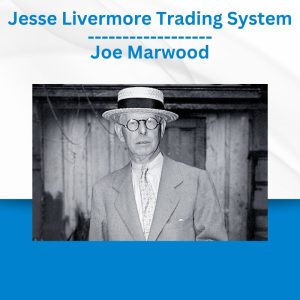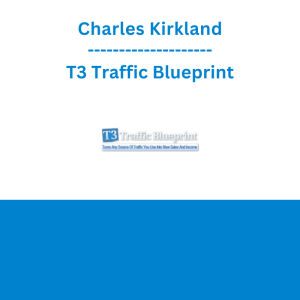*** Proof of Product ***
Exploring the Essential Features of “Jim Troup & Sharon Michalsky – Divorcing the Dow: Using Revolutionary Market Indicators to Profit from the Stealth Boom Ahead”
Divorcing the Dow: Using Revolutionary Market Indicators to Profit from the Stealth Boom Ahead Hardcover
by Jim Troup (Author), Sharon Michalsky (Author)
An investment approach that unlocks the secret of market patterns
Based on over forty years of combined author experience as portfolio managers and financial advisors, Divorcing the Dow presents a timely framework for understanding and investing in market cycles. Authors Jim Troup and Sharon Michalsky believe that the Dow Jones Industrial Average is no longer a relevant indicator of market performance; in fact, they feel that watching the Dow may actually obscure indications that the financial markets are poised to experience a boom that dwarfs anything seen before. Based on in-depth research and field-tested in their own successful management of millions of dollars in personal and corporate assets, Divorcing the Dow introduces investors to a revolutionary paradigm for assessing the markets and making investment decisions. Troup and Michalsky’s approach focuses on analyzing patterns of productivity as a way to anticipate market cycles and investment potential-and with this book they’ve outlined how investors can begin to recognize these patterns themselves. Divorcing the Dow provides investors with a new framework for thinking about financial markets and gives readers specific investment techniques to anticipate the market’s direction and identify companies poised for sustained productivity and long-term growth.
Jim Troup (Sarasota, FL) is First Vice President, Financial Consultant, Portfolio Manager, and Corporate Client Group Director at Smith Barney. A twenty-four-year finance veteran, Troup has worked with leading investment firms including E.F. Hutton and Merrill Lynch, and lectures extensively on portfolio management and asset allocation.
SHARON MICHALSKY is First Vice President, Financial Consultant, Portfolio Manager, Corporate Client Group Director at Smith Barney, where she began her career nineteen years ago. She has attended The Wharton School and is the guest speaker at many professional forums where she lectures on investment methodology and portfolio management.
Editorial Reviews
From the Inside Flap
Three years into the 21st century, investing is still done the way it was a hundred years ago.Like all things outdated, the fable that the Dow Jones Industrial Average is the center of the financial universe once served a purpose. Today its relevance is evaporating and its original purpose is a dim memory. Yet, fear of change has investors clinging so desperately to the past that they are getting rope burn.
Since the Dow was established over a century ago, a series of awakenings have rejuvenated productivity and introduced new business cultures. With each new business culture, a new investment culture has formed. Unfortunately, the powerful interests vested in the status quo tend to direct attention away from the opportunities the new investment culture offers. This restrictive view tells investors like yourself to be concerned about what the Dow did today and where it will be tomorrow, instead of focusing on what you must do to achieve financial success in the new investment culture. A myopic focus on the Dow also obscures the indicators suggesting that certain markets are heading toward the biggest boom in history.
Based on over forty years of combined author experience as portfolio managers and financial advisors, Divorcing the Dow begins by explaining why the Dow Jones Industrial Average is no longer a relevant barometer of the economic environment. To replace the Dow, authors Jim Troup and Sharon Michalsky present a timely and revolutionary framework for understanding and investing in market cycles. Their approach focuses on analyzing patterns of productivity as a way to anticipate market cycles. After seven years of mapping the investment genome, Troup and Michalsky discovered how a new investment cycle was triggered in 1998. They open the viewfinder on their research to show you the financial markets in their historic, cultural, and economic context, revealing the patterns that indicate the markets that are poised to experience a boom dwarfing anything seen before.
Troup and Michalsky provide investors with a new framework for thinking about financial markets and give specific investment techniques to anticipate the markets direction and identify companies poised for sustained productivity and long-term growth. Based on in-depth research and field-tested in the authors own successful management of millions of dollars in personal and corporate assets, Divorcing the Dow introduces you to a revolutionary paradigm for predicting market patterns. Troup and Michalsky provide you with the state-of-the-art tools needed to make strategic and profitable investment decisions and get a jump-start on other investors who continue to use an investing system that clearly has run its course.
From the Back Cover
Praise for Divorcing The Dow”Troup and Michalsky know how to see beyond the negativity and restore the readers confidence in the financial markets.”
Louis Navellier, CEO and President, Navellier and Associates, Inc.
“Divorcing the Dow digs deep into the changes behind the markets. This is a thought-provoking book in a critical economic era.”
Jack London, President and CEO, CACI International Inc.
“Divorcing the Dow clearly explains how to profit from the transformations of the market culture. It is a road map for success filled with terrific insights.”
Jim Madden, CEO, Exult
“Divorcing the Dow exposed me to a balanced fund of knowledge concerning the various markets and how they operate. I could hardly put it down!”
G. Hunter Gibbons, Dickinson & Gibbons
“Readers of Divorcing the Dow will emerge with an understanding of the 21st century investment culture and a renewed enthusiasm for equities investments. It is insightful, thought-provoking, and refreshingly specific. Every investor and potential investor should read this book.”
Edward A. Labry III, President and CEO-Elect, Concord EFS, Inc.
“Divorcing the Dow presents provocative thoughts on the new business paradigm in our age of increasing technology, information, and speed.”
Jim Sinegal, President and CEO, Costco Wholesale Corp.
About the Author
JIM TROUP is First Vice President, Financial Consultant, Portfolio Manager, and Corporate Client Group Director at a major brokerage firm. A twenty-four-year finance veteran, Troup has worked with leading investment firms including E.F. Hutton and Merrill Lynch. He lectures extensively on portfolio management and asset allocation.SHARON MICHALSKY is First Vice President, Financial Consultant, Portfolio Manager, and Corporate Client Group Director at a major brokerage firm, where she began her career nineteen years ago. She has attended The Wharton School and is the guest speaker at many professional forums where she lectures on investment methodology and portfolio management.
Product details
Publisher : Wiley; 1st edition
Language : English
Hardcover : 240 pages
Customer reviews
SLG1
Provoking Examination of the “Financial Markets”
Divorcing the Dow provided a provoking examination of how we have historically defined the financial “markets”. This book challenges the reader to re-define how we have used outdated measurements to forcast future market conditions. The authors have presented a new and fresh approach to evaluating the next financial revolution! After a 3 year bear market, I feel more optimistic than ever before!
Ed LaVarnway
Better to read (or reread) a classic!
While Divorcing the Dow highlights some tried and true criteria for selecting individual equity investments, e.g. to focus on leading companies that dominate vital growing sectors of the economy, it also falls prey to a “new logic” approach that can be very misleading, especially to beginning investors. Worse, the authors don’t understand a fundamental rule of financial arithmetic. On page 162 they discuss a hypothetical investment manager that turns a portfolio worth $100,000 into $200,000 in one year, and then loses half that value the next, resulting in an end year value of $100,000. The authors suggest that the “average return” from this is 25% (the arithmetic mean of +100% and -50%). Clearly, if we began and ended with the same dollar value, the average annual return is 0%, which is the result calculated by the geometric mean, the correct method to use in computing growth rates. A 25% average annual return on $100,000 would result in a portfolio value after two years of $100,000 X (1.25^2) = $156,250. The authors and their editors should know better. In my opinion readers would be far better served by such classics as The Intelligent Investor by Benjamin Graham, A Random Walk Down Wall Street by Burton Malkiel, or Contrarian Investment Strategies, by David Dremen.
Please see the full list of alternative group-buy courses available here: https://lunacourse.com/shop/










 Chris Capre - Advanced Price Action Ongoing Training & Webinars
Chris Capre - Advanced Price Action Ongoing Training & Webinars  Oliver Velez - Essential Strategy Of Trade For Life
Oliver Velez - Essential Strategy Of Trade For Life  Emanuele Bonanni - My Trading Way
Emanuele Bonanni - My Trading Way  Akil Stokes & Jason Graystone - TierOneTrading - Trading Edge 2019
Akil Stokes & Jason Graystone - TierOneTrading - Trading Edge 2019  Geoff Futch & Alex Viada - HPA CORE Coaching Fundamentals
Geoff Futch & Alex Viada - HPA CORE Coaching Fundamentals  Dave Landry - Stock Selection Course
Dave Landry - Stock Selection Course  George Fontanills & Tom Gentile - Optionetics 6 DVD Series Home Study Course (Digital Download)
George Fontanills & Tom Gentile - Optionetics 6 DVD Series Home Study Course (Digital Download)  James Waslaski - Elite Sports Therapy - The Massage Mentor Institute
James Waslaski - Elite Sports Therapy - The Massage Mentor Institute  Jesse Livermore Trading System - Joe Marwood
Jesse Livermore Trading System - Joe Marwood  Simpler Trading - Bruce Marshall - The Options Defense Course
Simpler Trading - Bruce Marshall - The Options Defense Course  Erik Banks - Alternative Risk Transfer
Erik Banks - Alternative Risk Transfer  Sarah Peyton - Introduction to Resonant Language: an 8-week Online Course + Practice Space
Sarah Peyton - Introduction to Resonant Language: an 8-week Online Course + Practice Space  Doug Simons - Alternatives to Dentists
Doug Simons - Alternatives to Dentists  Ed Ponsi - Forex Trading
Ed Ponsi - Forex Trading  Crypto Dan - The Crypto Investing Blueprint To Financial Freedom By 2025
Crypto Dan - The Crypto Investing Blueprint To Financial Freedom By 2025  The Daily Traders – Exclusive Trading Mentorship Group
The Daily Traders – Exclusive Trading Mentorship Group  Julie Stoian & Cathy Olson - Launch Gorgeous - Funnel Gorgeous Bundle
Julie Stoian & Cathy Olson - Launch Gorgeous - Funnel Gorgeous Bundle  Barry and Roger - Tubafy Gold
Barry and Roger - Tubafy Gold  Team NFT Money - Ultimate NFT Playbook
Team NFT Money - Ultimate NFT Playbook  Real Social Dynamics - The Fastest Easiest Most Effective Way To Attract Women
Real Social Dynamics - The Fastest Easiest Most Effective Way To Attract Women  SMB - Options Training
SMB - Options Training  Racing Workshop - Complete Online Package
Racing Workshop - Complete Online Package  Sovereign Man Confidential - Renunciation Video
Sovereign Man Confidential - Renunciation Video  Frans Lanting - The Art of Seeing: Macro Techniques for Flowers and Plants
Frans Lanting - The Art of Seeing: Macro Techniques for Flowers and Plants  Hale Dwoskin - Sedona Method - Stability And Serenity - Navigating the Shifting Sands
Hale Dwoskin - Sedona Method - Stability And Serenity - Navigating the Shifting Sands  Trade Like Mike - The TLM Playbook 2022
Trade Like Mike - The TLM Playbook 2022  George Fontanills & Tom Gentile - Optionetics Wealth Without Worry Course
George Fontanills & Tom Gentile - Optionetics Wealth Without Worry Course  Scott Paton & Sabrina Lynn Domenosky - Get Fit To Get Dating
Scott Paton & Sabrina Lynn Domenosky - Get Fit To Get Dating  Anita Moorjani - Reimagine Healing - The Shift Network
Anita Moorjani - Reimagine Healing - The Shift Network  Garry Kasparov - Teaches Chess – Masterclass
Garry Kasparov - Teaches Chess – Masterclass  Fred Crouter - Inner Secrets of Cold Reading
Fred Crouter - Inner Secrets of Cold Reading  E.A.N. (Electron Adapted Neurotherapy) Webinar Replay - Treatment Protocols - Jeremy Steiner
E.A.N. (Electron Adapted Neurotherapy) Webinar Replay - Treatment Protocols - Jeremy Steiner  Matan Feldman - The 13-Week Cash Flow Modeling - Wall Street Prep
Matan Feldman - The 13-Week Cash Flow Modeling - Wall Street Prep  Kara Welke & Sue Doyle - Now What? Becoming a Next Level Therapist: Current Practice, Side Gig, Start a Business
Kara Welke & Sue Doyle - Now What? Becoming a Next Level Therapist: Current Practice, Side Gig, Start a Business  Centre of Excellence - NLP for Children Diploma Course
Centre of Excellence - NLP for Children Diploma Course  Charles Kirkland - T3 Traffic Blueprint
Charles Kirkland - T3 Traffic Blueprint  Rich Webster - How To Work Less
Rich Webster - How To Work Less  Linda Nozart-Frierson - Asthma Education with Passion: The Journey Towards Asthma Control
Linda Nozart-Frierson - Asthma Education with Passion: The Journey Towards Asthma Control  The Perfect Offer - Proven Formulas
The Perfect Offer - Proven Formulas  Lesa Snider - Moving and Removing Objects in Photoshop
Lesa Snider - Moving and Removing Objects in Photoshop  Sinah Trevino - 1 Hour Yogalates Full Body Workout - Yoga Fusion
Sinah Trevino - 1 Hour Yogalates Full Body Workout - Yoga Fusion  David Snyder - NLPPower - Weapons of Social Seduction
David Snyder - NLPPower - Weapons of Social Seduction  Gary Felder - The Big Bang and Beyond: Exploring the Early Universe
Gary Felder - The Big Bang and Beyond: Exploring the Early Universe